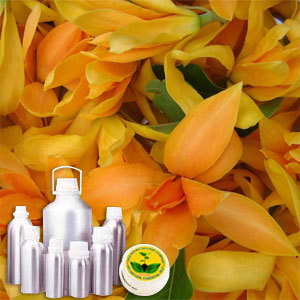Botonical Name | : | Michelia champaca | |
CAS # | : | 8006-76-6 | |
Country of Origin | : | India | |
Color & Odor | : | Reddish Brown transparent liquid & unique and appealing fragrance | |
Solubility | : | Insoluble in water, soluble in alcohol and oils | |
Specific Gravity | : | 0.91 - 1. 01 @ 20 °C | |
Optical Rotation | : | 16.5.º | |
Refractive Index | : | 1.44 - 1.49 @ 20 °C | |
Flash Point | : | >100°C | |
Major Constituents | : | Linalool, Benzyl Acetate, Beeta lonone, Phenyl Ethyl Alcohol, Red Champaka Absolute | |
Plant Part Used | : | Flowers | |
Extraction Method | : | Steam Distillation |
DESCRIPTION:
Champaca Oil is used to formulate a number of items that include mist spray, diffuser, massage oil, aroma lamp oil, inhaler, bath oil, light bulb ring, fragrance and so on. This oil is extracted from subtropical tree with beautiful and aromatic flowers. CONSTITUENTS:
Champaca oil contains compounds like beta-elemene, beta-caryophyllene, 62% Linalool and methyl eugenol. AROMATIC SUMMARY / NOTE / STRENGTH OF AROMA:
Champaca Essential Oil has strong, long lasting and distinctive pleasant smell. BLENDS WITH:
Champaca oil can be mixed with the oil of Ylang Ylang. COMMON NAMES:
Champaca Oil is also referred as Champa, Champaca Flower, Champak Sapu and frangipani oil. USES:
The extract of champak is utilized as one of the basic raw materials for the formulation of some of the most costly scents across the world. 


































